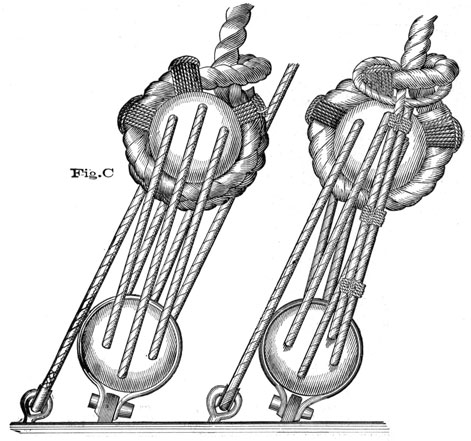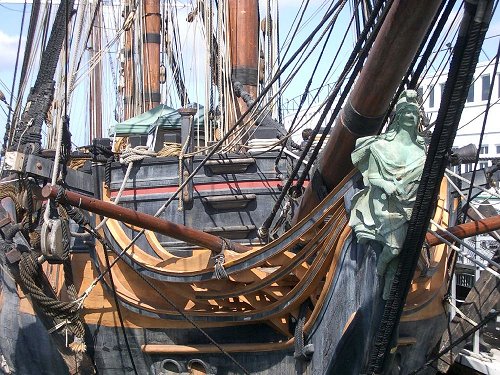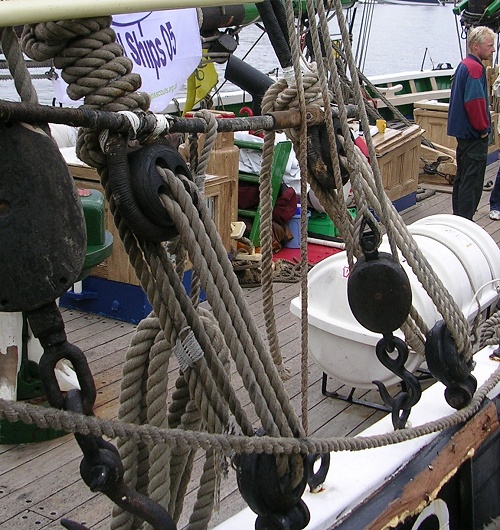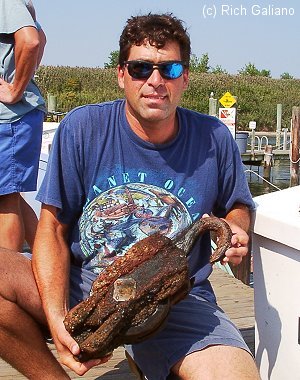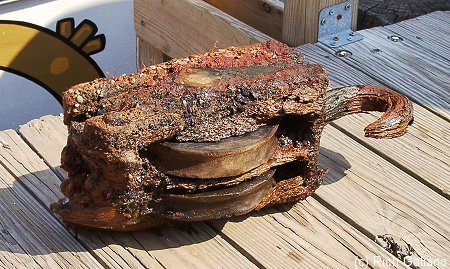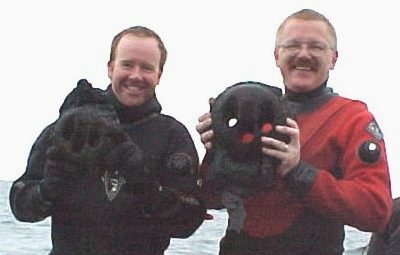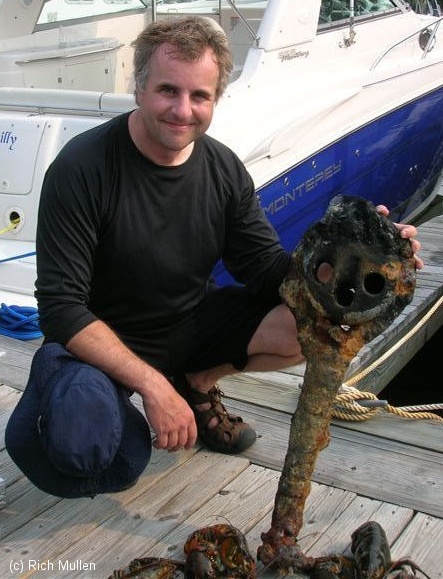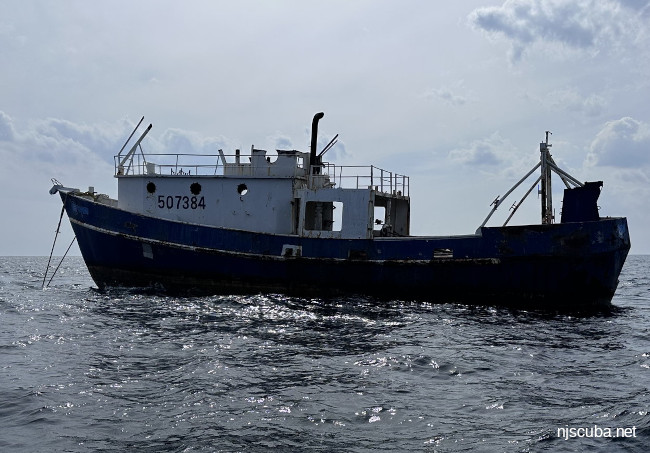Deadeyes & Blocks
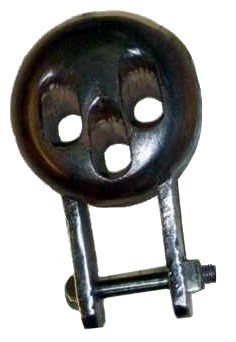
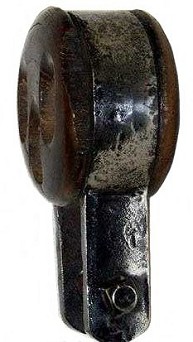
Deadeyes (above and right) and blocks (below) were used in the rigging of old-time sailing ships. In either case, the purpose was to gain mechanical advantage through the use of compound pulleys. This was especially necessary in the days before powered winches, when the only working force onboard was literally manpower.

Deadeyes were used mainly in static rigging, such as mast stays. Although there are no moving parts, a deadeye still functions as a pulley, albeit with greater friction. The name deadeye is thought to come from the resemblance to the eyes of a skull. Deadeyes were always used in pairs as shown, although they are usually found singly, the lanyard between having long since rotted away.
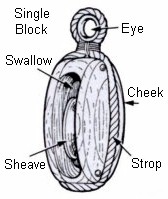
A block really is a pulley, with one or more rollers to decrease friction. Blocks were used in live rigging, such as for trimming sails. Pairs of double or triple blocks ( with multiple rollers on a common axle ) could accomplish the same mechanical advantage as a deadeye. Modern sailboats still use such arrangements, often with built-in ratchets.
Before the advent of high-strength steels, blocks and deadeyes were constructed from very dense, tough woods, such as elm or lignum vitae. As a result, these articles often survive well in the sea and may be recovered by divers in relatively good condition.
In the latter part of the nineteenth century, wooden deadeyes and rope stays were replaced by metal turnbuckles and steel wire, while multiple blocks were replaced by steam-powered winches, which could function without the need of force-multiplying pulleys. Therefore, finding a wooden deadeye or block is a good indication of the age of a wreck.
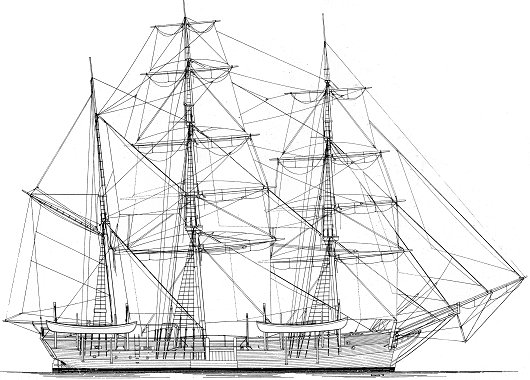

Detail of the standing rigging of the mainmast of the Charles W. Morgan, showing the stays and deadeyes. Some of the running rigging is also shown, with blocks and pulleys. It is impossible to depict these details at the level of resolution of a computer monitor. Go and see the ship for yourself at Mystic Connecticut.
